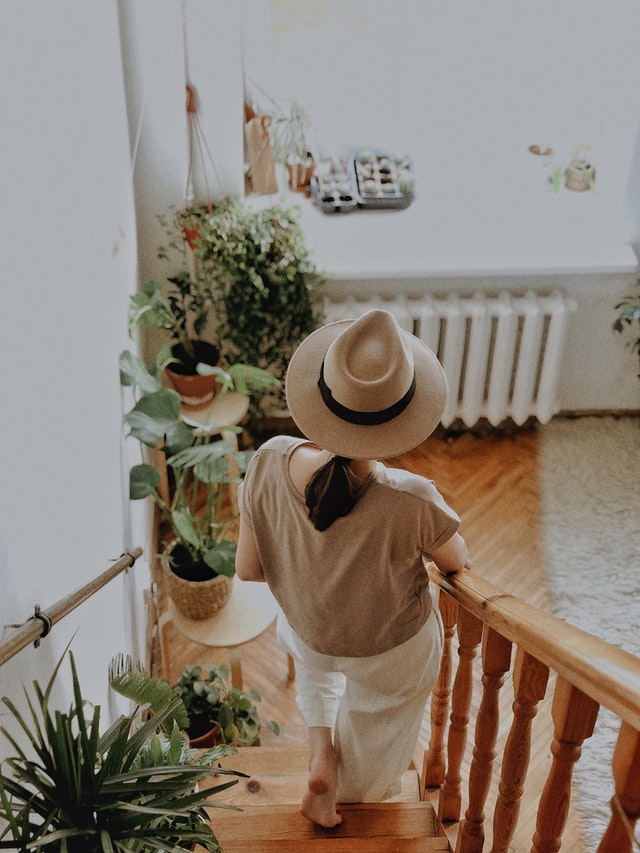Can you make it out? Summer’s setting in the distance, the smell of suntan lotion no longer on the nose and the taste of ice cream receding on the palate. But what a summer it was; the balmy nights spent at Glastonbury and lazy, louche days up on Henman Hill had us renewing our vows to the Great British outdoors all over again.
The best memories were formed, as they always seem to be, in a field, frolicking amongst the long grass, or up a tree, overseeing hazy sunsets. But as the nights draw in and the temperatures cool, suddenly that sense of freedom found outdoors is harder to pin down. Well, sometimes there’s no shame in bringing the outside in; a sly nod to nature in times of urban suffocation. Yep, you guessed it; today we’re channeling the energy of indoor plants.
Plants can bring a natural calmness to your space; not only purifying the air that you breathe by removing the toxins that linger in houses, but also – as research has shown – by making you happy. Indeed, studies have suggested that by having houseplants in certain rooms of your home, you are able to reduce stress, increase positivity, boost your mood and even reduce the risk of fatigue or anxiety. With that in mind, here are 5 IDEAL beginner tips for looking after your house plants.
CHOOSE YOUR PLANT WISELY
If you’re just about to embark on your first houseplant buying expedition, there’s a good chance you’re not really sure which to buy. Do you go for something colourful and delicate? How about something robust and imposing? Whatever you choose, it needs to be looked after. But some houseplants are way more high-maintenance than others. There’s nothing worse (there probably is) when you’re a new plant parent than coming home to find your beautiful new addition all shrivelled and brown.
So what’s the answer? Treat yourself to some super easy-going houseplants, of course. But houseplants that are really simple to care for don’t need to be boring; oh no. The good guys over at Climadoor have put together a list of their favourite houseplants with ‘superpowers’ which are just perfect for beginners. One of the plants they recommend investing in is a Snake Plant (or Mother-in-Laws Tongue depending on where you’re from) which, because of its genetic makeup, only needs watering every month or so – ideal for anyone who spends a lot of time away. Another plant on Climadoor’s list is the Swiss Cheese plant which does perfectly well in low light conditions – great for the UK, then. All of the plants they’ve chosen are low-maintenance, stylish and above all, beautiful. Check it out.
DON’T OVERWATER
When the leaves start sagging and the tips turn brown, the temptation is always to water more. But a deterioration in colour doesn’t necessarily mean your plant is thirsty. Sometimes it’s quite the opposite, in fact.
Brown leaves simply mean your watering habits aren’t appropriate for that particular plant. So, this could mean you’ve been overdoing the hydration for some types of plant, or under (shallow) watering for others. Equally as important is that there’s a chance for water to drain below the soil; it’s usually advisable to have a row of pebbles between soil and the pot’s drainage holes to allow for better release of excess water.
Brown tips may also indicate a lack of humidity in your home; many houseplants are native to the jungle and the dry air of the British domestic space may not suit them perfectly. An occasional spritz of water over the leaves will see this right.
DOES IT NEED DIRECT SUNLIGHT?
It’s a commonly held misconception that the more light a houseplant is exposed to, the better they’ll grow. But each plant has varying needs and tolerance to sunlight, and proper, ‘direct’ sunlight can actually be remarkably hard to achieve at home. Some will require supplementing with an artificial, hydroponic glow if they’re not getting enough. Basically, it’s important to familiarise yourself with the specific requirements of each plant. Some of the most popular plants which thrive without huge doses of direct sunlight include peacock plants, Chinese evergreens, dumb canes and parlor palms. In the craving-loads-of-the-stuff category, succulents (cacti, aloe vera…) love sunlight, as do geranium and those aforementioned snake plants.
REPOT
The vessel you brought your houseplant home in isn’t necessarily its best fit. Often, the pot is smaller than the plant needs; should its roots be emerging from the drainage holes, it’s a surefire sign that it’s begging for more real estate. More soil equals more freedom and opportunity to find food, all essential for a houseplant’s longevity. On the flipside, ‘overpotting’ a small plant in a huge pot will leave the plant sitting in lots of wet soil, unable to process all of the water and nutrients in its new home. A fine balancing act indeed, but one integral to your plant’s perpetuity.
SOIL SAVVY
Not all soil was created equal, and not all soil will be houseplant appropriate. In general, a multi-purpose compost or indoor potting mix (comprised of peat moss, vermiculite and perlite) is decent, but sometimes it sinks over time, stifling the roots and not granting much breathing space. They are also prone to drying out and contain no nutrients, so it’s worth adding fertilizer to keep things ticking along. These needn’t be chemical or harmful, just organic materials such as rich garden soil or leaf mold.







